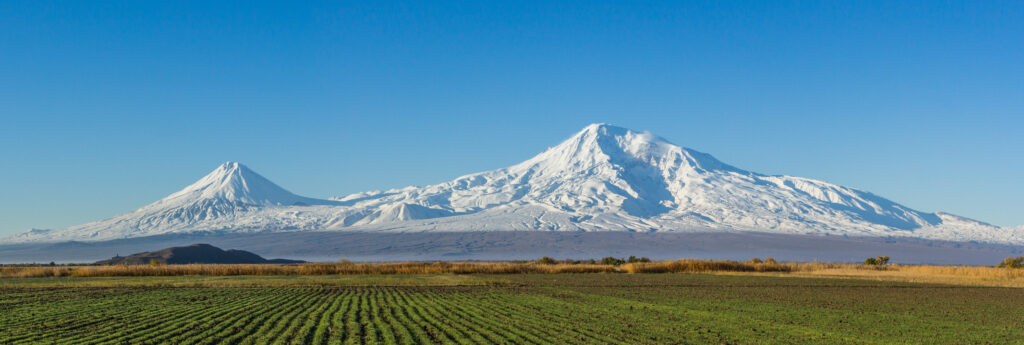Natural Wonders in Armenia
Mount Ararat
A significant part of Armenia’s culture, Mount Ararat is seen on the country’s coat of arms. It overlooks Iran, Turkey, and Armenia. This dormant snow-capped volcano is famous in the Christian culture as it is associated as the resting place for Noah’s Ark.

see it here
Lake Sevan
As one of the world’s biggest high-altitude freshwater lakes, Lake Sevan is located in the province of Gegharkunik. It is the largest lake in Armenia and covers approximately 5% of the country’s surface. During clear days, the water is a deep turquoise and the sands are a beautiful white.
Vorotan River Gorges

With unrivaled scenery, this river canyon is in Syunik. More than one hundred meters deep and up to three kilometers wide, the canyon is a tourist hot spot. Deep canyons, peaked mountains, and island fortresses will leave you breathless as you view from the east.
Khosrov Forest State Reserve
The Khosrov Forest, or Khosrov Reserve is one of the earliest protected areas in the world. In the Ararat Province, the reserve was founded by King Khosrov III, ruler from 330-339. Containing a natural mountain range with high plateaus overlooked by volcanic peaks and massifs, this area was originally reserved as a hunting place for the royal family, as well as an area for natural climatic condition development for the nearby city of Artashat.
Lake Arpi
Home to around one hundred species of birds, Lake Arpi is the perfect getaway from the crowds. With camping and hiking trails, you can feel at one with nature at the second most important water source in Armenia.
Dilijan National Park
Known for the curing mineral water fountains, Dilijan National Park is often called the “Switzerland of Armenia”. The lush, green forested area is rich in biodiversity and nature. From ecotourism trails, hiking, biking, and camping, this Tavush Province treasure is worth a visit.
Zuar
A hidden gem in the Karvachar region, Zuar is known for its hot water springs. Just a twenty-minute walk from the village center will take you to the main bathing spring. For thousands of years, people have traveled far and wide to bathe in the springs for their healing properties.
This article brought to you by our good friends at Little Rock Gutter & Maintenance – Check out their site here: https://www.littlerockgutter.com